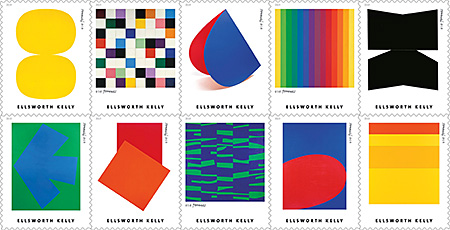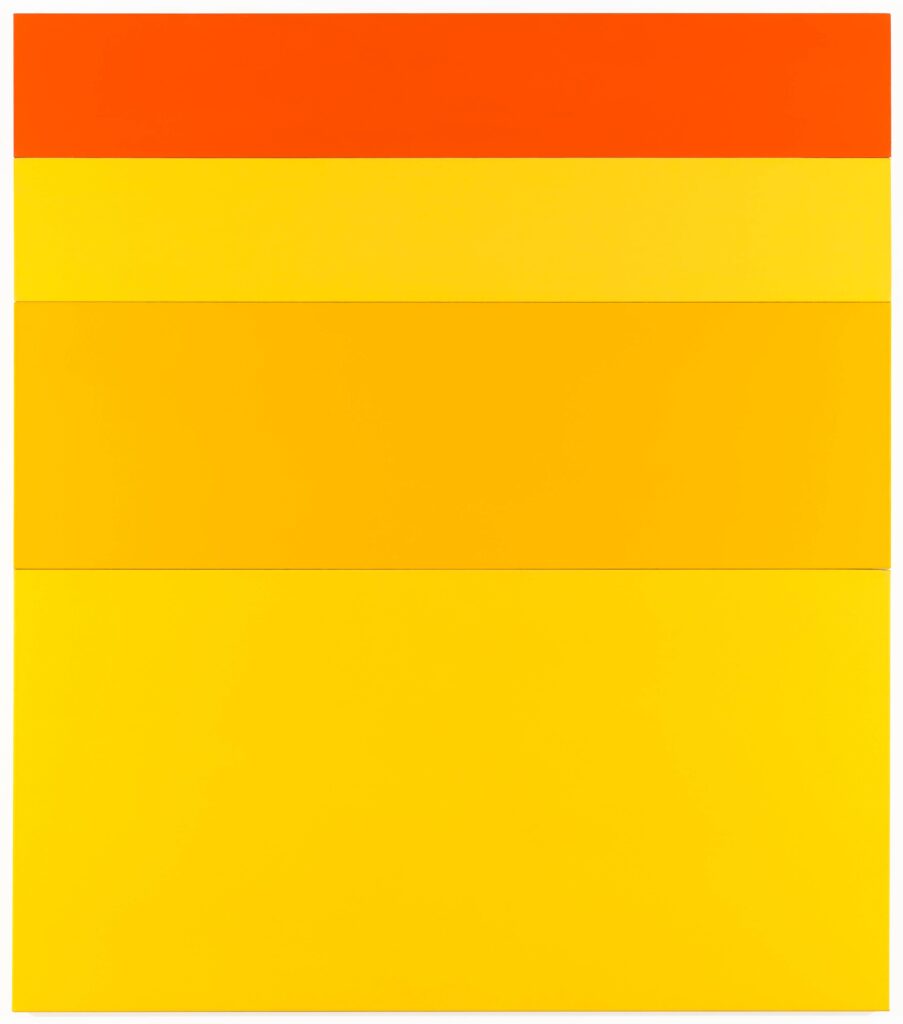
In 2019 the United States Postal Service really did put out a stamp named Gaza. It’s on the lower right, no. 5391, a 1956 four-canvas painting by Ellsworth Kelly in the collection of SFMOMA called Gaza.
SFMOMA’s page says more about the donors than the painting, and has the date as just 1956, while it has otherwise been dated 1952-56. The difference feels relevant, because it spans Kelly’s formative sojourn in Paris and his 1954 move to New York City.

Eugene Goossen’s brief description of the painting in the catalogue for Kelly’s 1973 MoMA exhibition is almost entirely about the interplay of the colors, and the one yellow mixed with a bit of the red, and how they recede or move forward, contrary or in line with how we read paintings as landscapes, and how area and color balance each other in visual presence.
“The title Gaza occurred to him because it was a time of war between the Israeli [sic] and the Arabs along the Gaza strip, and the blinding light of the sun and the color of blood seemed to be symbolized in the painting,”
Did it really, though? In her catalogue essay for Kelly’s 1996 Guggenheim retrospective [pdf], Roberta Bernstein wrote that Gaza was based on a 1952 collage of a bus stop sign in Paris.
She cites a 1992 conversation with Ann Hindry published in the Printemps 1992 special all-Kelly issue of Artstudio, that I scraped together online. Wherein, the artist explained, “I had taken the idea from an enamel information sign at Paris bus stops which was red at the top and made of interchangeable yellow horizontal bands, but had called it Gaza because the Gaza strip was a political concern at the time (still is), and nobody would have thought much of a composition taken from a Paris bus stop!” [I wonder if interchangeable is more like alternating.]
I believe Kelly included Gaza in his first show at Betty Parsons in May-June 1956. In this case, the Suez Crisis was escalating, but it was before the Khan Yunis and Rafah Massacres by Israel, which happened in November. So the title quickly became a lot.
